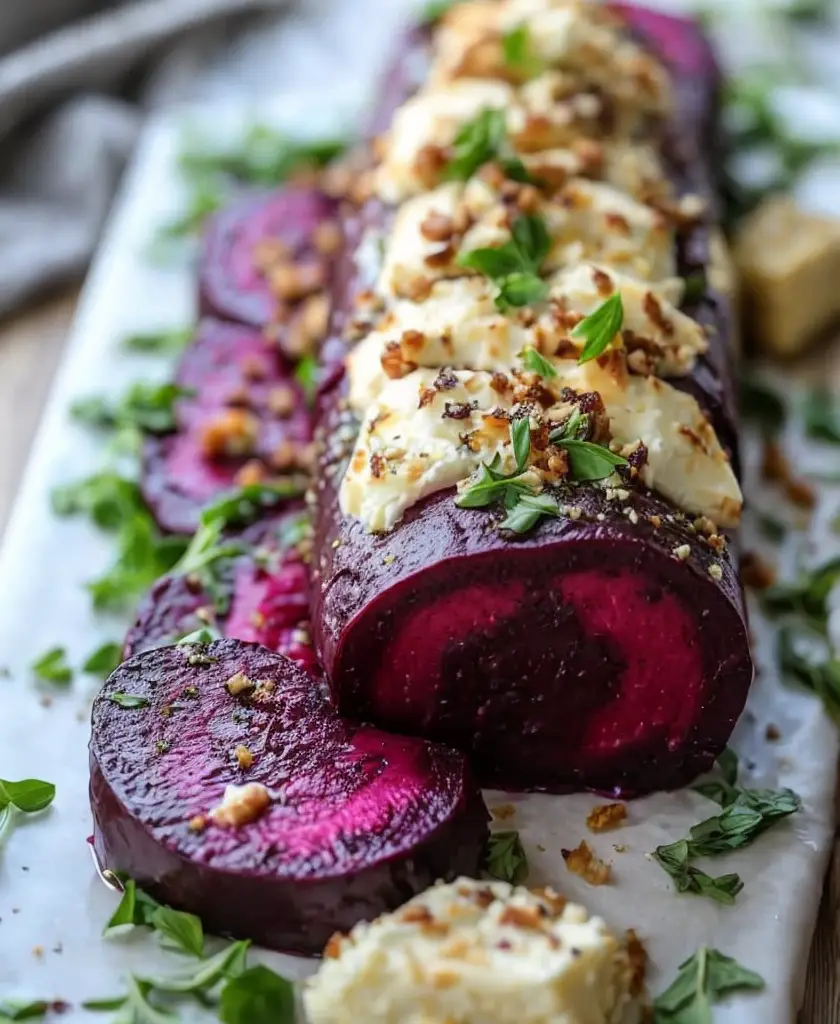Zesty Mojito Lime Cheesecake Delight: A Refreshing Treat for All Occasions
The Zesty Mojito Lime Cheesecake Delight is a tantalizing dessert that takes the classic cheesecake to new heights with refreshing flavors inspired by the beloved mojito cocktail. Imagine a creamy cheesecake infused with zesty lime juice and freshly chopped mint, adorned with a crumbly graham cracker crust. Each slice is a burst of flavor, transporting you to a tropical paradise with every bite. This cheesecake perfectly balances the richness of the cream cheese with the bright acidity of lime, delivering a harmonious dessert that is sure to impress family and friends.
Crafting the perfect Zesty Mojito Lime Cheesecake is not only about the flavors but also about the experience. The meticulous preparation allows for each layer to come together seamlessly. The doughy crust is complemented by the smooth, velvety filling, while a mint garnish adds a fresh touch. Ideal for balmy summer evenings or festive gatherings, this dessert reaches beyond the ordinary and creates lasting memories for those lucky enough to enjoy a piece.
Quick Recipe Highlights
- Flavor Profile: The combination of tangy lime and refreshing mint creates a vibrant, zesty flavor that dances on the palate, making it a perfect dessert for summer.
- Texture: The creamy filling contrasts beautifully with the crunchy graham cracker crust, providing a delightful mouthfeel that is both smooth and satisfying.
- Aroma: The bouquet of fresh mint and citrus notes fills the air, inviting everyone to savor a slice of this delicious cheesecake.
- Visual Appeal: With its bright lime green color and fresh mint garnish, this cheesecake is a stunning centerpiece for any dessert table.
- Skill Level Needed: This recipe requires basic baking skills, but the detailed steps make it accessible even for novice bakers.
- Special Equipment: A springform pan is essential for creating this luscious cheesecake, along with a mixer for achieving the perfect creaminess.
Recipe Overview
- Difficulty Level: This Zesty Mojito Lime Cheesecake is classified as medium difficulty due to the layering of flavors and the precise cooking process involved in achieving the perfect texture.
- Category: This dessert falls under both dessert and cake categories, making it a versatile choice for various occasions.
- Cuisine: This dish draws inspiration from Latin American and Caribbean cuisines, where lime and mint feature prominently in drinks and desserts.
- Cost: The estimated cost is moderate, as the ingredients are relatively affordable, making it an accessible recipe for most home bakers.
- Season: This cheesecake is best enjoyed during the warmer months when fresh mint and limes are in season, enhancing the flavors.
- Occasion: Perfect for summer gatherings, birthday parties, or even just a treat to enjoy at home, this cheesecake is bound to delight.
Why You’ll Love This Recipe
The Zesty Mojito Lime Cheesecake offers a delightful blend of tangy and refreshing flavors that invigorate the senses. The smooth cheesecake base provides a rich backdrop for the zingy lime, while the mint brings a vibrant freshness that complements the overall experience, making it an unforgettable dessert. Each bite is a balanced mixture of creamy and zesty, leaving your taste buds craving for more.
The preparation process is as enjoyable as the final product. With easy-to-follow steps, you can create a dessert that feels luxurious without needing expert baking skills. The result is a delectable cheesecake that will have friends and family talking about your culinary skills. Plus, the ingredients are straightforward to work with, allowing for a stress-free baking experience.
Nutritionally, this cheesecake can be considered a slightly healthier dessert option compared to other traditional cakes. It incorporates natural ingredients like fresh lime juice and mint, offering a burst of vitamin C and antioxidants. While it remains indulgent, being able to enjoy a tasty dessert that doesn’t feel overly heavy is a win.
Socially, this dessert is perfect for sharing. Whether you bring it to a potluck, a barbecue, or serve it at dinner parties, the Zesty Mojito Lime Cheesecake becomes a conversation starter. It’s a unique offering that stands out from the usual dessert fare and invites joyful exchanges about flavor combinations and recipe secrets.
Moreover, the affordability and accessibility of the ingredients make this cheesecake an excellent choice for those looking to impress without breaking the bank. With just a few key ingredients, you can create a stunning and delicious dessert that feels high-end yet is easy on your wallet.
Historical Background and Cultural Significance
The origins of the mojito cocktail date back to 16th-century Cuba, where it was enjoyed by locals and later gained international popularity. This sweet and refreshing drink is typically made with lime, mint, sugar, and rum, and its vibrant flavors make it a perfect inspiration for various culinary creations, including desserts. The melding of cheesecake with mojito elements honors this rich heritage while bringing a modern twist to a classic dish.
In culinary traditions, lime and mint are frequently used in tropical cuisines to create refreshing pairings, especially in desserts meant to be served chilled. This Zesty Mojito Lime Cheesecake taps into those flavors, reflecting the spirit of celebration that accompanies summer gatherings and festive occasions. Each bite embodies the essence of a refreshing cocktail turned into a delightful dessert.
Over the years, the cheesecake has evolved significantly from its origins. Originally, cheesecakes were made with simple, locally sourced ingredients. Today, they come in various styles and flavors, frequently incorporating creative elements that reflect a diverse culinary landscape. The Zesty Mojito Lime Cheesecake showcases this evolution by blending traditional baking techniques with innovative flavors, appealing to modern palates.
Regional variations of cheesecake can be found globally, each reflecting the local culture and available ingredients. From the classic New York-style to fruity interpretations, this Zesty Mojito Lime Cheesecake adds its unique flair to the spectrum of cheesecake flavors, inviting home bakers and dessert lovers into its refreshing world.
Ingredient Deep Dive
– **Cream Cheese:** A staple in cheesecake recipes, cream cheese adds a rich and creamy texture. Its mild flavor pairs beautifully with sweet and tangy ingredients, making it an ideal base for this dessert. Look for full-fat cream cheese for a smoother, richer result. Store cream cheese in the refrigerator, and always check the expiration date before using.
– **Lime Juice:** Fresh lime juice adds the essential tang and brightness to the cheesecake. Limes are rich in vitamin C and are known for their antiseptic properties. Choose firm, glossy limes that yield slightly when pressed, indicating freshness.
– **Mint:** Fresh mint elevates the mojito flavors in this cheesecake, bringing a refreshing aroma and taste that complements the tanginess of lime. Packed with antioxidants, mint supports digestion and overall wellness. To keep mint fresh, store it in a glass of water in the fridge.
– **Graham Crackers:** Used for the crust, graham crackers provide a sweet, crunchy texture that contrasts beautifully with the creamy filling. Look for whole graham cracker varieties for added flavor and nutrition. Store leftover crackers in an airtight container to maintain their crispness.
– **Sugar:** The sweetness in this recipe comes from granulated sugar, balancing the tartness of the lime. While sugar adds calories, using it in moderation can fit into a balanced diet. If you’re looking for alternatives, consider natural sweeteners like honey or agave nectar.
Common Mistakes to Avoid
- Not softening the cream cheese: Always ensure your cream cheese is at room temperature before mixing; otherwise, you’ll end up with a lumpy filling that lacks the desired smoothness.
- Overmixing the batter: Mix just until combined to avoid incorporating too much air. Overmixing can lead to cracks in the cheesecake as it bakes and cools.
- Skipping the chilling step: Allow your cheesecake to chill properly before serving. This step is crucial for achieving the creamy texture and allows the flavors to meld beautifully.
- Not using a water bath: For the creamiest results and to prevent cracks, bake your cheesecake in a water bath to regulate the temperature and maintain moisture.
- Pulling the cheesecake out too soon: Always check for doneness. If it’s too jiggly in the middle, it needs more time. An undercooked cheesecake can turn runny once cooled.
- Skimping on flavors: Use fresh lime juice and mint for the best flavor. Bottled juice lacks the vibrant taste of fresh ingredients and may result in a dull cheesecake.
- Not cooling properly: Let the cheesecake cool gradually in the oven with the door ajar to help prevent cracks and maintain a creamy, smooth texture.
- Not waiting to slice: The cheesecake will be very soft if you slice it too soon. Cool it in the fridge for several hours or overnight for best results.
Essential Techniques
– **Softening Cream Cheese:** It’s important to bring cream cheese to room temperature to ensure easy mixing and a smooth texture. Place it out for about 30 minutes to soften naturally, or microwave it in short 10-second bursts. Be cautious to not melt it, as this will affect the final texture.
– **Mixing Technique:** When blending the filling, mix on a low speed to combine the ingredients without incorporating too much air into the mixture. This will create a denser and creamier cheesecake. Always scrape down the sides of the bowl to ensure an even mix.
– **Water Bath Method:** Using a water bath (bain-marie) helps regulate the baking temperature, ensuring even cooking. To create this, wrap the outside of your springform pan with aluminum foil to prevent leaks, then place it in a larger pan filled with hot water.
– **Chilling Time:** Patience is key for a cheesecake. After baking, let the cheesecake cool in the oven with the door slightly open, then chill in the fridge for a minimum of four hours or overnight. This helps set the filling for a firm slice.
Pro Tips for Perfect Zesty Mojito Lime Cheesecake Delight
– Always use fresh ingredients, especially lime and mint, to achieve the best flavor profile.
– If you prefer a different crust, consider using crushed vanilla wafers or chocolate cookies for a unique twist.
– To intensify the lime flavor, add lime zest to the filling for an extra punch.
– Consider adding a layer of lime gelee on top for an added visual appeal and a burst of tanginess.
– Experiment with garnishes—candied lime slices or mint sprigs add visual appeal and a touch of elegance.
– When slicing, dip your knife in hot water for a clean cut, which helps to present a beautiful cheesecake.
– For a fun twist, try using coconut cream instead of cream cheese for a lighter, dairy-free version.
– Serve individual slices with a drizzle of lime syrup for an extra treat that looks impressive.
Variations and Adaptations
– **Regional Variations:** Add local flavors like coconut or passion fruit for a tropical spin that complements the original mojito theme.
– **Seasonal Adaptations:** Substitute fresh berries for mint during the berry season for a fruity variation that pairs well with lime.
– **Dietary Modifications:** To make it gluten-free, substitute the graham crackers with almond flour or gluten-free cookie crumbs.
– **Flavor Variations:** Infuse the cream cheese with other citrus flavors, such as grapefruit or tangerine, for a different profile while maintaining that refreshing zing.
– **Texture Modifications:** For a fluffier texture, beat egg whites separately and fold them into the filling before baking. This addition provides a lighter cheesecake.
– **Presentation Alternatives:** For a trendy look, serve mini cheesecakes in jars with layered graham cracker crumbs for an individual portion that’s easy to share.
Serving and Presentation Guide
Creating the perfect presentation for your Zesty Mojito Lime Cheesecake will make it irresistible. Consider a clean and elegant plating technique using a large spatula to gently transfer a slice onto the plate. Garnish your cheesecake with freshly whipped cream, lime slices, and a sprig of mint on the side to enhance visual appeal. The contrasting colors of the lime-green cheesecake, the golden crust, and the vibrant green mint create an eye-catching dish.
For special occasions, opt for a beautiful cake stand that elevates your cheesecake, embodying sophistication. When serving, it’s essential to allow each slice to come to room temperature for that creamy texture and full flavor profile. Remember to adjust the portion size depending on the occasion; larger slices work well for parties, while smaller portions may suit a dinner party setting.
If serving at a large gathering, consider creating a dessert buffet where guests can choose their cheesecake slice, along with other refreshing summer desserts. This interactive approach not only enhances the dining experience but allows for social interaction among guests.
Wine and Beverage Pairing
Selecting the right beverages to enjoy with your Zesty Mojito Lime Cheesecake can elevate the entire experience. A chilled sauvignon blanc, with its citrus notes and crisp acidity, pairs wonderfully with the lime flavors in the cheesecake. For a more festive option, a sparkling wine like Prosecco complements the dessert’s lightness and freshness.
For non-alcoholic alternatives, consider serving a mint limeade or lime sparkling water, which will mimic the minty and tart qualities of the cheesecake while providing a refreshing contrast. Iced tea with fresh mint or citrus-infused water also makes for delightful pairings that accommodate everyone.
If coffee is your preference, a light roast coffee blends beautifully with the cheesecake, as its subtle flavors won’t overpower the dessert. When serving these beverages, make sure they are chilled and served in elegant glassware to match the refined nature of the cheesecake.
Storage and Shelf Life
Proper storage of your Zesty Mojito Lime Cheesecake is crucial to maintain its delicate flavor and texture. Store the cheesecake in an airtight container in the refrigerator for up to one week. If you plan to keep it longer, consider freezing it to extend its shelf life up to three months.
To freeze cheesecake, allow it to cool completely, then wrap it tightly in plastic wrap followed by aluminum foil to prevent freezer burn. When ready to serve, thoroughly thaw it in the refrigerator overnight; then allow it to come to room temperature before slicing to enjoy the best texture.
Keep an eye out for signs of spoilage, such as an off smell or unusual texture. If the crust becomes soggy, or if there are any visible signs of mold, it is best to discard the cheesecake to ensure food safety.
Reheating cheesecake is generally not recommended, but if you prefer a warm dessert, slice a piece and place it in the microwave for a few seconds to achieve a slightly softened texture.
Make Ahead Strategies
Planning ahead is key when preparing your Zesty Mojito Lime Cheesecake for an event. You can make the cheesecake a day or two in advance. After baking and cooling, cover it properly and let it chill in the refrigerator. This chilling period allows the flavors to meld beautifully, enhancing the overall taste.
Consider preparing the graham cracker crust a day before. Store it in the refrigerator until you’re ready to pour in the filling. If you have any additional toppings—like whipped cream or fruit—prepare them ahead of time and store them separately to maintain freshness.
For the ultimate convenience, bake and cool the cheesecake in advance, then freeze. It will stay fresh, and you can pull it out to thaw when you need it without compromising its flavor. Just remember to finish any decorative garnishes just before serving to ensure they look their best.
Scaling Instructions
Depending on your needs, scaling this recipe can be effortlessly achieved without compromising the integrity of the Zesty Mojito Lime Cheesecake. For smaller gatherings, halve the ingredients; this should be fine, but adjust your baking time slightly to accommodate the smaller size.
For larger parties, consider doubling or tripling the recipe. Use a larger baking pan, but you will need to monitor the baking time more carefully for doneness. Test with a toothpick inserted in the center—if it comes out mostly clean, you’re good to go.
When increasing the recipe, ensure you still whip the filling in batches if you’re using a standard mixer. Overloading the mixing bowl can lead to unevenly mixed batter. Lastly, remember to adjust serving portions accordingly, as larger quantities may lead to different slice sizes.
Nutritional Deep Dive
Understanding the nutritional elements of your Zesty Mojito Lime Cheesecake can help you appreciate its benefits. Each slice provides a good source of calcium and protein due to the cream cheese, essential for bone health and muscle function. However, it’s essential to manage portion sizes, as the dessert does contain added sugars.
Vitamin C is also plentiful from the lime, supporting the immune system and skin health. The refreshing mint complements this with additional antioxidants, potentially supporting digestive health and providing a low-calorie flavor enhancer.
If you’re monitoring your dietary intake, it’s important to be aware of the macronutrient distribution in this dessert. A slice can contain around 300 calories, depending on portion size and ingredients, making it an occasional treat rather than an everyday snack.
For those managing weight, consider having smaller portions, and pairing them with fresh fruit or a light salad to round out the meal—keeping decadent desserts special and enjoyable without feeling overly indulgent.
Dietary Adaptations
Transforming the Zesty Mojito Lime Cheesecake to accommodate different dietary needs can be simple. For gluten-free versions, replace traditional graham crackers with crushed gluten-free cookies or almond meal for the crust.
If you’re catering to dairy-free preferences, creamy coconut milk or cashew cream can be used instead of cream cheese, while ensuring cohesion in texture. Similarly, opt for dairy-free whipped cream for garnishing without dairy content.
For vegans, replace eggs with flaxseed meal and use dairy-free cream cheese alternatives. The rest of the flavor profile remains intact, making it an inclusive dessert option.
Low-carb adaptations can be made by using almond flour for the crust and natural sugar substitutes like erythritol to cut down carbohydrates while keeping the sweetness intact. These modifications make this delightful cheesecake suitable for various lifestyles without sacrificing taste.
Troubleshooting Guide
– **Texture Issues:** If your cheesecake turns out too dense, consider incorporating less cream cheese, or try adding whipped cream for airiness. Avoid overmixing during preparation, as this can make it heavy.
– **Flavor Balance:** If the cheesecake lacks flavor, increase the lime juice and zest for a more pronounced tang. Add an additional splash of mint extract for enhanced freshness.
– **Temperature Problems:** If the cheesecake browns on top too quickly during baking, reduce the oven temperature to avoid an overly cooked crust while ensuring the filling sets properly.
– **Equipment Challenges:** If using a non-springform pan, line it well with parchment paper to facilitate easy removal. Consider purchasing a reliable springform pan for future cheesecakes.
– **Ingredient Substitutions:** Not having fresh lime juice? Consider using bottled juice in a pinch, but use less as it can be more concentrated. However, fresh is always best for taste.
– **Timing Concerns:** If you find the cheesecake is cooking too fast, cover the top with foil to prevent it from getting too dark while the interior continues to bake.
– **Chilling Durations:** After baking, if your cheesecake isn’t cooling well, make sure it’s not placed near warm spots in the kitchen. Let it rest on the counter before transferring it to the fridge.
– **Cracks in the Cheesecake:** If cracking occurs, ensure proper chilling is done and avoid overbaking. A water bath while baking can significantly decrease the chance of cracks.
Recipe Success Stories
Community feedback is a crucial aspect of crafting perfect recipes. Many readers have expressed their joy in making the Zesty Mojito Lime Cheesecake and have loved how refreshing it is compared to traditional desserts. A reader shared how they found that doubling the mint gave an even more impactful flavor, making it the talk of their last BBQ.
Variations have also taken off in the community. Some suggest adding a layer of raspberry on top for a beautiful contrast, while others have opted for a chocolate crust, proving that this recipe is versatile and open to personal touches. Readers often upload their creations on social media, providing inspiration and encouraging others to experiment.
Photography tips have emerged through the community, emphasizing the importance of good light when snapping your final dish. The bright colors of the cheesecake shine under daylight, making it an appealing visual treat that begs to be photographed.
Engagement in the comments section is often enthusiastic, creating a wonderful support circle among home bakers. Encouraging readers to share their adaptations, they contribute variations that inspire others to make the Zesty Mojito Lime Cheesecake their own.
Frequently Asked Questions
Can I use bottled lime juice instead of fresh?
While bottled lime juice can be used, fresh lime juice provides a brighter flavor and is recommended for the best results. Fresh juice captures the vibrant essence that makes this dessert stand out.
How do I know when my cheesecake is done baking?
Check for doneness by gently shaking the cheesecake; the edges should be set while the center remains slightly jiggly, as it will continue to set as it cools.
What should I do if my cheesecake cracks?
If you notice cracks, don’t worry! You can cover them with whipped cream or fruit to mask them, or use a ganache to create a smooth finish.
Can I freeze leftover cheesecake?
Yes! To freeze, ensure it’s completely cooled, then wrap it tightly in plastic wrap and foil. It can last in the freezer for about three months.
What can I use instead of mint?
If you don’t have mint, consider using basil for a unique twist. Alternatively, omit the herb altogether and simply enhance the lime flavor.
What’s the best way to serve the cheesecake?
Serving the cheesecake slightly chilled with a dollop of whipped cream and a garnish of lime and mint enhances its refreshing profile. Serve on elegant plates for added appeal.
Can I use other citrus fruits besides lime?
Absolutely! This recipe can be adapted to use other citrus fruits like lemon or grapefruit, just adjust the sugar level depending on the fruit’s tartness.
Is this cheesecake safe for pregnant women?
This cheesecake contains cream cheese; consult with your doctor about soft cheeses. Ensure it’s made with pasteurized products for safety.
How long does the cheesecake need to chill?
For best results, let your cheesecake chill in the fridge for at least four hours or ideally overnight to allow the flavors to meld and the texture to set.
Can I make this cheesecake ahead of time?
Yes! The cheesecake can be made a couple of days in advance and stored in the fridge until you’re ready to serve it. It tends to taste even better after chilling!
Additional Resources
As you dive into the world of cheesecakes, consider exploring other related recipes to expand your dessert repertoire. For instance, try a classic New York cheesecake, a rich chocolate cheesecake, or a fruity berry cheesecake. Each of these can provide a different experience while remaining true to the concept of creamy desserts.
Technique guides are invaluable when honing your baking skills. Understanding pie crust techniques or the perfect way to create a water bath for cheesecakes can significantly enhance your ability to create perfect desserts every time.
Ingredient information is also vital—learning about various cheese types, such as mascarpone or ricotta, can inspire you to create new flavors and textures in your cheesecakes or other desserts.
For those eager to experiment with tools, investing in a quality stand mixer and using a good springform pan can make the process easier and yield professional results.
Finally, seasonal variations can spark creativity. In fall, consider adding pumpkin to the cheesecake filling, or during winter, spice up the base with cinnamon or nutmeg for a cozy feel.
Join the Conversation
Engaging with your readers transforms your recipe blog into a vibrant community. Encourage social media sharing by creating a dedicated hashtag for the Zesty Mojito Lime Cheesecake, allowing you to compile user-generated content easily. This interaction fosters a sense of belonging, as readers can share their triumphs or adaptations.
Photography tips are essential post-baking, as many readers want to showcase their desserts. Create a beginner’s guide to food photography that highlights lighting, angles, and staging.
Invite feedback and recipe reviews, allowing readers to share their experiences and what worked for them. This valuable exchange can help others learn while strengthening the community aspect of your blog.
Encourage recipe variations by asking readers to submit their adaptations or innovative twists on the classic Zesty Mojito Lime Cheesecake. Sharing personal stories related to food can make the recipe even more meaningful.
By fostering strong community engagement, you create an enthusiastic atmosphere that makes both your blog and recipes come alive, encouraging more people to participate and share their culinary adventures.
The Recipe
Zesty Mojito Lime Cheesecake Delight
Serves: 8 servings
Prep Time: 30 mins
Cook Time: 60 mins
Total Time: 90 mins
Kitchen Equipment Needed
- Springform pan
- Mixer
- Mixing bowls
- Measuring cups and spoons
- Rubber spatula
- Aluminum foil (for water bath)
- Sharp knife (for slicing)
Ingredients
- 1 ½ cups graham cracker crumbs
- ½ cup unsalted butter, melted
- 2 (8-ounce) packages cream cheese, softened
- 1 cup granulated sugar
- 3 large eggs
- 1 cup fresh lime juice
- Zest of 2 limes
- ⅓ cup fresh mint, chopped
- 1 teaspoon vanilla extract
Directions
- Preheat the oven to 325°F (160°C). Prepare the springform pan by wrapping the outside with aluminum foil to prevent leaking.
- In a mixing bowl, combine the graham cracker crumbs and melted butter until well blended. Press firmly into the bottom of the springform pan to form the crust.
- In a large bowl, beat the cream cheese and sugar until smooth and creamy. Add the eggs one at a time, mixing until just blended.
- Stir in the fresh lime juice, lime zest, chopped mint, and vanilla extract until combined.
- Pour the cheesecake mixture over the crust in the prepared springform pan.
- Place the springform pan inside a larger pan. Fill the larger pan with hot water until it reaches halfway up the sides of the springform pan.
- Bake for 60 minutes or until the center is slightly jiggly but set.
- When done, turn off the oven and allow the cheesecake to cool inside with the door ajar for about 1 hour.
- Remove the cheesecake from the oven and refrigerate for at least 4 hours, preferably overnight, before serving.
Recipe Notes
- Can replace mint with basil for a different flavor.
- For a dairy-free version, use coconut cream instead of cream cheese.
- Add powdered sugar to whipped cream for garnishing.




